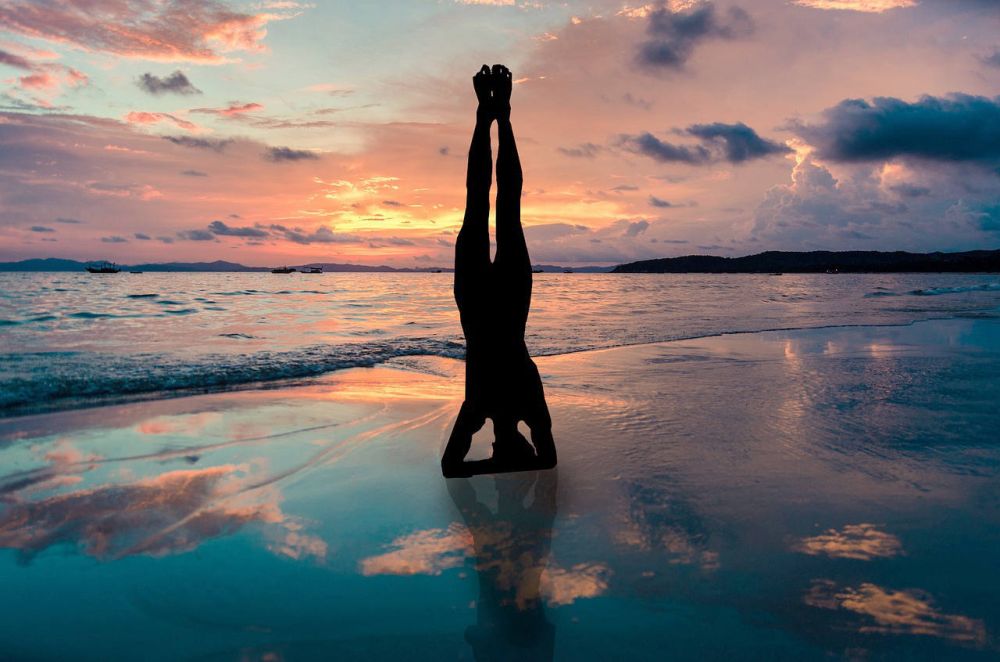
One of the more challenging yoga poses is the Headstand or Sirsasana. It's an intermediate yoga pose that presents quite a bit of challenge for beginners just starting yoga.
Don't try out the headstand right away if you are new to yoga. It's one of the inversion poses that can only be done properly after many months of practice.
Headstand or Sirsasana requires a high amount of strength and flexibility. It's very dangerous if done incorrectly. You should aim to master many other yoga postures before this one when starting yoga.
Even if you learn quickly and do yoga very often, practice other asanas for a long time before trying this one to build upper body strength and balance.
The body is entirely inverted while doing the Headstand posture. It's held upright with almost no support from the head. All the support comes from the forearms. The top of the head will only rest gently on the floor.
Panaprium is independent and reader supported. If you buy something through our link, we may earn a commission. If you can, please support us on a monthly basis. It takes less than a minute to set up, and you will be making a big impact every single month. Thank you!
Benefits of practicing the headstand (Sirsasana)
The headstand allows the practitioner to feel physically and mentally refreshed. It has many benefits when practiced safely regularly while keeping very important considerations in mind.
If you practice Sirsasana regularly, you will get the following benefits:
- Improved confidence and ability to handle challenges
- Improved blood circulation throughout the body
- Strong shoulders, core, arms, and neck
- Increases energy levels, stamina, and metabolism
- Increases nutrients flow to the head for younger skin and hair
- Calmed mind, stress and anxiety relief
- Better profound sleep
Avoid practicing the headstand in these cases

Don't practice Sirsasana if you are just starting yoga. At least a few months are required to build the necessary strength in the upper body and deep core.
The headstand shouldn't be the first inversion that you try even if it is not the most difficult one. Start with easier but still challenging poses as it is very confusing to go upside down for the first time.
In general, yoga and especially all inversions should be practiced on an empty stomach. An entirely inverted body can prevent food to circulate through your body properly.
The headstand should also be avoided during menstruation, and if you suffer from high blood pressure, hypertension, or heart palpitations. If you have ears or eyes problem, don't practice the headstand either.
This yoga pose is also very demanding for the neck and shoulders. So avoid it if you have any pain in those body regions.
When should you attempt the headstand

It's one very important posture that every yoga student should learn at some point for the challenge, to progress, and take the yoga practice to the next level, even with a home practice.
Just make sure to practice regularly and go step by step to master it. Be patient with yourself and don't forget to breathe, focus, and have fun.
How to do challenging yoga: Headstand (Sirsasana)
- Make sure that you don't put all your weight on your head. The headstand is a full-body posture that engages the legs and the core, the arms, and shoulders.
- Put most of your weight on your shoulders and upper outer arms to relieve the neck. Engage your core while holding your legs together without falling into a backbend. Practicing the dolphin pose is a great way to build strength and ease into the Headstand. The head and arms placement are critical to success as they are the foundations of this posture.
- Place your forearms against the ground and cross your hands. Make sure to keep your head at the base of your palms and your hands opened. Your weight should be on your forearms and not on your head.
- Lift your lower body and walk your feet as close as possible to place your waist above your shoulders. Always press very firmly into your forearms and wrists while engaging your core to stay stable. You will then need a strong core to lift your feet and your knees progressively with control and balance. Do not kick up. Instead, do it slowly to build core strength and prevent injuries.
Summing up:
The Headstand or Sirsasana is one of the more challenging yoga poses with intermediate difficulty. It has many benefits for good health when practiced correctly regularly.
It can improve energy levels, strength, and stamina, also get rid of stress, anxiety, and insomnia. Plus, it helps blood circulation to the head and increases nutrients flow.
The headstand should only be done under important considerations. During menstruation, with high blood pressure or pain in the shoulders and neck, this pose should be avoided.
The hand placement is very crucial to practice the headstand. Make sure to have enough arms, shoulders, and core strength before attempting to do it. Doing it regularly can also help you lose weight.
Was this article helpful to you? Please tell us what you liked or didn't like in the comments below.
About the Author: Alex Assoune
What We're Up Against
Multinational corporations overproducing cheap products in the poorest countries.
Huge factories with sweatshop-like conditions underpaying workers.
Media conglomerates promoting unethical, unsustainable products.
Bad actors encouraging overconsumption through oblivious behavior.
- - - -
Thankfully, we've got our supporters, including you.
Panaprium is funded by readers like you who want to join us in our mission to make the world entirely sustainable.
If you can, please support us on a monthly basis. It takes less than a minute to set up, and you will be making a big impact every single month. Thank you.

































0 comments